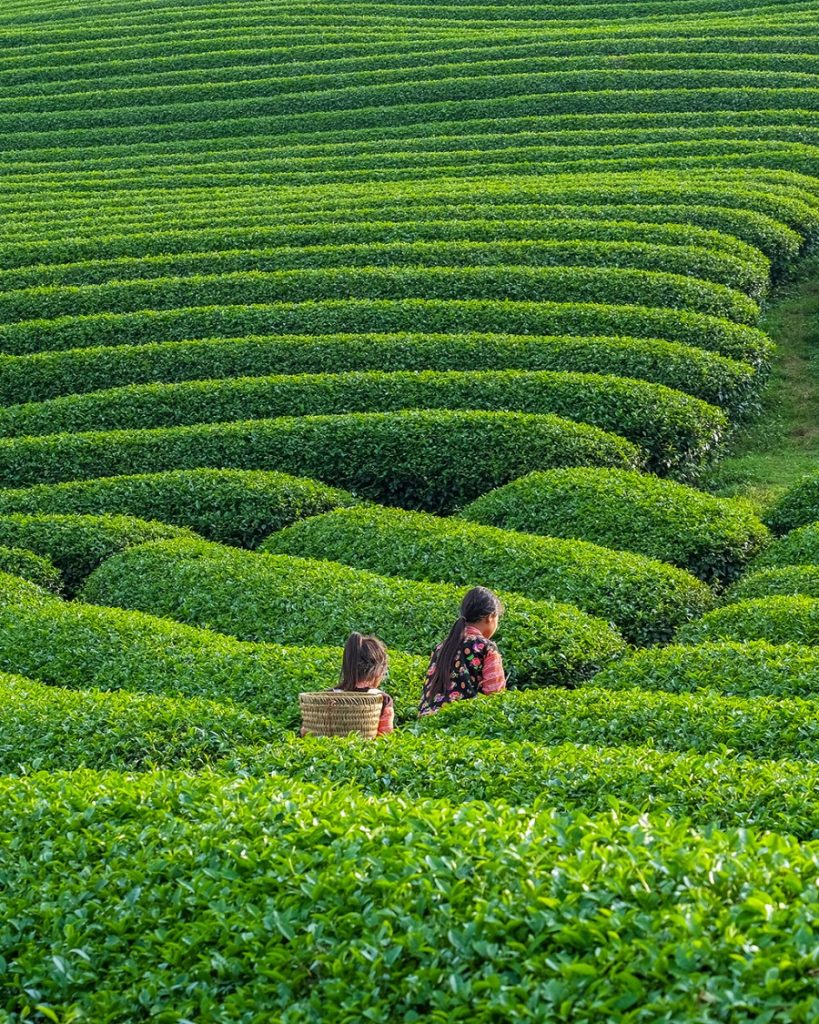Moc Chau, a lush highland region in Son La Province, Vietnam, is renowned not only for its stunning natural landscapes but also for its vibrant festivals that celebrate the rich cultural heritage of its ethnic minorities. These festivals provide an immersive experience into the local traditions, offering visitors a chance to engage with the cultural essence of the area. In this article, we’ll delve into some of the most unique and captivating festivals of Moc Chau.
1. The H’mong Independence Festival
Time and Location
The H’mong Independence Festival, also known as Tết Độc Lập, takes place in early September each year in Moc Chau town and the surrounding H’mong villages. It is one of the most significant and widely attended festivals among the H’mong people, drawing numerous visitors to witness its celebrations.

Activities and Rituals
This festival is a time for the H’mong to honor their ancestors, express gratitude to their homeland, and participate in various festive activities. Traditional games such as pao throwing, archery, and horse racing are highlights of the festival. Additionally, performances featuring traditional music and dance create a lively and joyous atmosphere.
Distinctive Cuisine
Traditional dishes such as smoked meat (thịt gác bếp), five-color sticky rice (xôi ngũ sắc), and corn wine (rượu ngô) are integral to the festival. Attendees have the opportunity to savor these local delicacies and gain insights into H’mong culinary traditions, which reflect the region’s rich agricultural practices.
2. The Thai “Het Cha” Festival
Time and Location
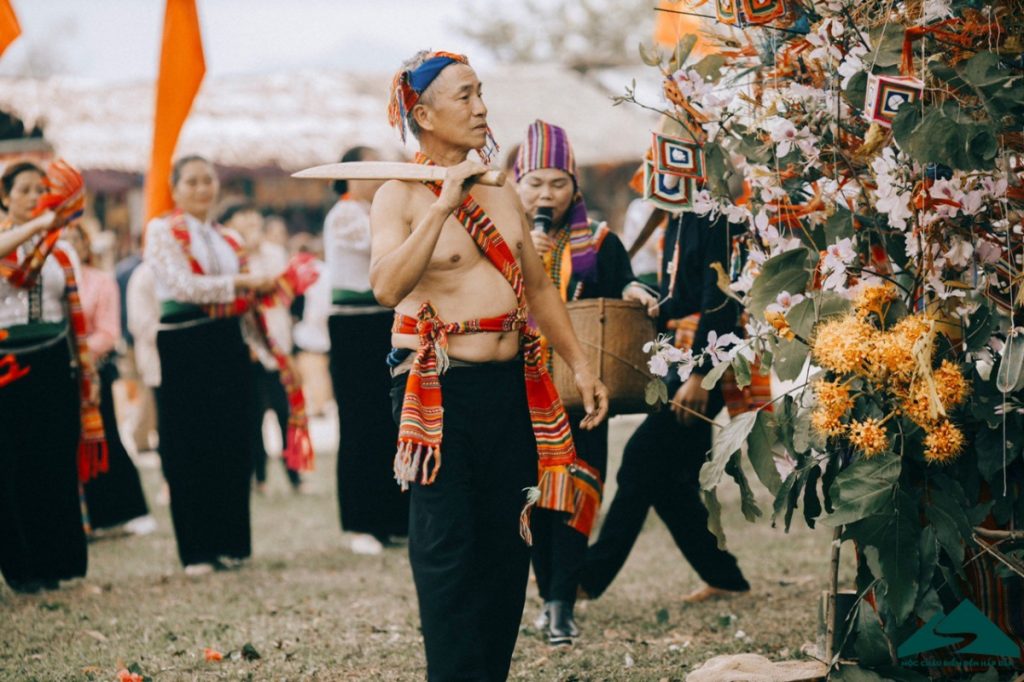
The Thai “Het Cha” Festival, celebrated in March according to the lunar calendar, is held in the Thai ethnic villages of Moc Chau. This festival is dedicated to wishing for good health, bountiful harvests, and a prosperous and happy life.
Rituals and Activities
The festival commences with rituals to honor ancestors and deities, seeking peace and prosperity. Festivities include traditional dances such as the sạp dance and the xòe dance, as well as various folk games. The xòe dance, in particular, is a notable cultural feature of the Thai people, symbolizing unity and hospitality.
Traditional Cuisine
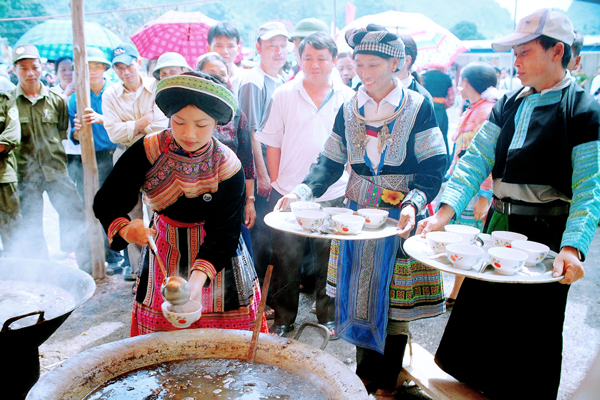
During the “Het Cha” Festival, traditional Thai foods such as bamboo rice (cơm lam), grilled fish (cá nướng), and rice wine (rượu cần) are prepared. Visitors can enjoy these dishes and explore the rich flavors of Thai cuisine, reflecting the region’s culinary diversity and cultural significance.
3. The Ban Flower Festival
Time and Location
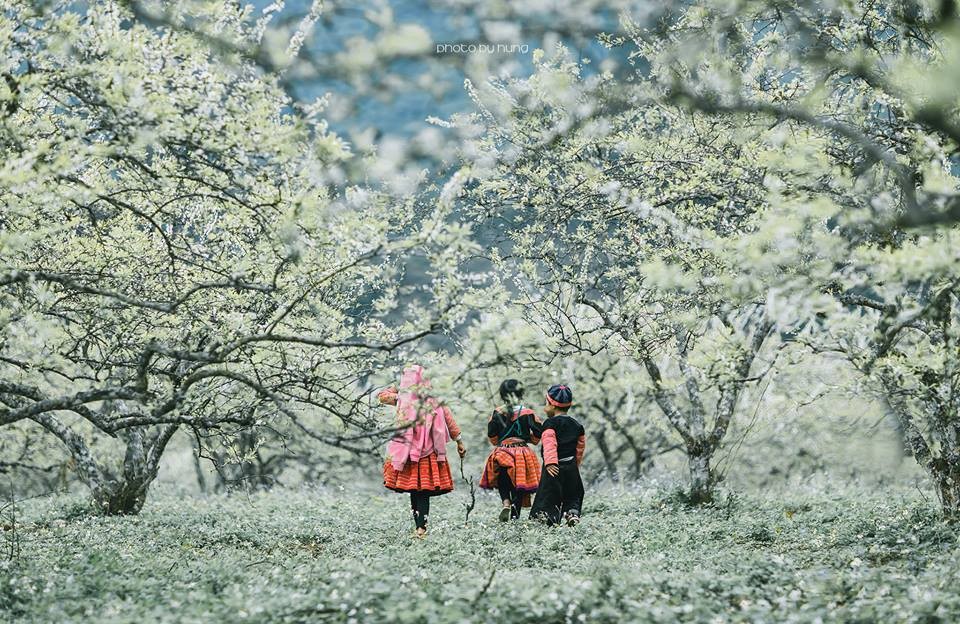
The Ban Flower Festival takes place from February to March each year, coinciding with the blooming season of the ban flower across the hills of Moc Chau. The festival is usually held in central areas of the town and surrounding villages.
Activities and Rituals
The Ban Flower Festival celebrates the beauty of the ban flower, a symbol of purity and fidelity. Activities during the festival include ethnic costume parades, traditional music and dance performances, and beauty contests. Visitors can participate in these events and admire the vibrant scenery of the blooming ban flowers.
Cultural Experience
Beyond the artistic performances, the Ban Flower Festival offers a chance to experience the distinct cultural practices of the Thai, H’mong, and other ethnic groups. The festival provides a comprehensive view of Moc Chau’s diverse cultural life through traditional dances and folk games, showcasing the region’s rich cultural tapestry.

4. Mid-Autumn Festival (Tet Trung Thu)
Time and Location
The Mid-Autumn Festival, or Tet Trung Thu, occurs on the 15th day of the 8th lunar month annually. This traditional festival is celebrated widely across Vietnam, including in Moc Chau.
Activities and Rituals
In Moc Chau, Tet Trung Thu features a range of activities such as lantern parades, lion dances, and cultural performances. Children often carry colorful lanterns, participate in folk games, and enjoy mooncakes.
Special Experience
The festival in Moc Chau is distinct for its community-centric celebrations in the villages, where local residents come together to organize festivities and cultural exchanges. Visitors can engage in these activities, experiencing the warm and friendly atmosphere that characterizes local celebrations.
5. The Rain-Making Festival
Time and Location
The Rain-Making Festival of the H’mong people usually takes place at the beginning of the summer, as the community prays for favorable weather and abundant harvests. The festival is celebrated in H’mong villages across Moc Chau.
Rituals and Activities
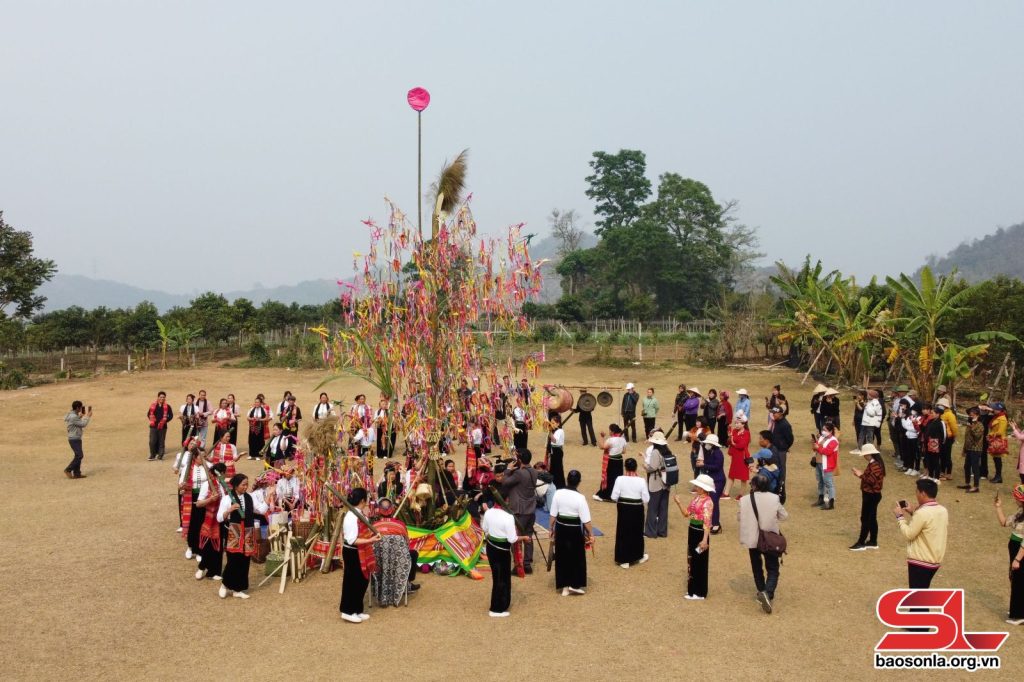
The festival begins with ceremonies to offer sacrifices to the heavens, asking for rain and good weather for crops. Following the rituals, the community enjoys singing, dancing, and various folk games. This festival provides visitors with an opportunity to learn about the unique customs and traditions of the H’mong people.
Culinary Culture
During the Rain-Making Festival, traditional H’mong dishes such as smoked meat (thịt gác bếp), five-color sticky rice (xôi ngũ sắc), and corn wine (rượu ngô) are prepared. Visitors can taste these regional specialties and experience the distinctive flavors of Moc Chau’s highland cuisine.
Conclusion
Moc Chau, with its diverse and unique festivals, is an ideal destination for those who appreciate natural beauty and wish to explore the rich cultural heritage of Vietnam’s ethnic minorities. Each festival in Moc Chau carries its own significance, reflecting the vibrant spiritual and communal life of its people. By participating in these festivals, visitors can experience the warmth, friendliness, and cultural richness of this highland region, making for an unforgettable journey.
Embrace the opportunity to immerse yourself in the cultural celebrations of Moc Chau, where each festival offers a glimpse into the heart of local traditions and community life. Discover the essence of Moc Chau through its festivals and create lasting memories of this enchanting highland destination.
